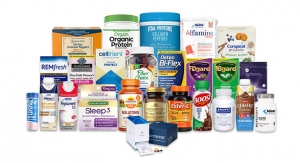Grant Washington-Smith & Paul Altaffer07.01.06
The market opportunity for U.S. manufacturers entering the Australian and New Zealand markets took a leap forward last year when the Australian and U.S. governments agreed to implement a Free Trade Agreement (called AUSFTA) between the two countries. This in turn has resulted in the elimination of tariffs and makes the process of entering the Australian market a simpler and faster one for U.S. exporters.
From the retail manufacturer's perspective, the combined markets of Australia and New Zealand represent a market population size of 24.5 million people, with a mean age across the population of both countries of 35 years. Australia and New Zealand both rank highly in the GDP per capita for developed countries, which means their consumers are not unduly constrained when it comes to consumer spending. In 2003, U.S.-based Health Strategy Consulting (HSC) published a market report on the Australian and New Zealand complementary medicine market. HSC estimated a total nutrition market value for Australia and New Zealand of AUS$2.9 billion, broken down as functional foods (AUS$1 billion), organic (AUS$0.8 billion), supplements (AUS$0.9 billion), and natural personal care (AUS$0.2 billion). They also argued that compared to other developed world markets, New Zealand and Australia have much potential for growth. Based on this report, Australia and New Zealand rank just behind Canada in terms of size of the functional food market (expressed in terms of dollar value).
A quick synopsis of the Australian and New Zealand consumer reveals a predominately well educated and affluent middle class for both countries. The acceptance and usage of the more traditional dietary supplements is high for both and there is good evidence that consumers are seeking the benefits of functional foods both from a nutrition and convenience perspective.
There are over 2100 retail health stores throughout Australia. Some of the major chains include Health Life, Go Vita, GNC-LiveWell and Good Life. There are approximately 450 health retailers in New Zealand with Health 2000 being the largest retail chain and Hardy's Healthy Living being the next largest.
Given the proximity to South East Asia, there is a strong Asian community and culture in both countries, representing opportunities for products based on Traditional Chinese Medicine. An example of this would be deer velvet (soft antler), which is widely available and accepted throughout New Zealand.
In May 2005, U.S.-based multinational healthcare company, Cardinal Health, published data pertaining to consumer preferences and trends in the Australian vitamin, mineral and dietary supplement market. The report examined consumer purchasing patterns over a period of five years up to 2005. The data indicated that 74% of the Australian population had taken one or more vitamin, mineral, herbal or nutritional supplements in the previous 12 months. While there has been moderate but consistent growth in vitamins and minerals, the largest growth appears to be with non-herbal dietary supplements. This growth appears to be driven strongly by younger women aged 20 to 30 years. To a lesser degree, growth can also be attributed to 44- to 54-year-old women. Finally, growth has also been observed among men and women in the 55+ age group. And a similar consumer trend profile could be expected within the New Zealand market.
It may seem along way to travel to access a new market, but Australia and New Zealand maybe worth taking a closer look at, especially since the free trade agreement (AUSFTA) between the U.S. and Australia came into effect on January 1st last year. The real impact of AUSFTA is that Australia has been able to eliminate all agricultural tariffs. This was a significant development, especially since in the past Australia typically maintained tariffs as high as 30% on certain dairy products, as well as tariffs of 4-5% on fresh and processed fruits and vegetables, processed foods, some grains, oilseeds and other products. The other advantage of AUSFTA is that regulators on both sides of the agreement have worked to eliminate the bureaucratic barriers to trade. Be advised, however, that the strict phyto-sanitary standards that existed in both Australia and New Zealand are still in effect today.
But while AUSFTA certainly represents an opportunity for U.S. natural products manufacturers, there are still some very important regulatory factors to consider in both Australia and New Zealand. The agency currently responsible for dietary supplement regulations in Australia is the Therapeutic Goods Administration (TGA). All complementary medicines, such as herbals, nutritional supplements, vitamins, minerals, aromatherapy, homeopathic medicines and Traditional Chinese Medicine, fall within the governance of the TGA. Most complementary medicines available for sale in the natural products market are referred to as "Listed Medicines" and can be found on the TGA's approved list. The process of approval for a new product requires an application to be submitted to the TGA. This can take six to eight weeks, after which the product is issued a unique AUST L number. All approved "Listed" complementary medicines appear with an "AUST L xxxxx" number printed on the product label. But for those products that for whatever reason are not included in the TGA list, there is a separate path to market called the "Registration" process. Unlike the "List" process, which covers a majority of dietary supplements and involves a review of both safety and quality, the registration process carries the additional burden of demonstrating the efficacy of the product. Registered products can be identified in the market with an "AUST R xxxxx" number on the label. While the cost of this registration process will vary depending the specifics of each product, one would expect just the application cost alone to be considerably higher than the application cost of the "List" process, and could take well over a year for approval in some cases.
For a U.S. exporter, the cost of regulatory compliance, including GMP certification, is something that requires careful review if entry into the Australian market is to be considered.
To ease this process there are several consulting companies in Australia like Robert Forbes and Associates Pty Ltd, which specialize in navigating the regulatory requirements of the TGA and assist companies with the submission process. A more comprehensive list of regulatory and technical consultants can be found on the website of the Complementary Healthcare Council of Australia (www.chc.org.au).
Despite the success of the Australian TGA in managing the health and well-being of its citizens, it is expected that by mid-2007, the TGA will be disbanded, replaced instead with the joint Australia and New Zealand Therapeutic Products Authority (ANZTPA-www.anztpa.org). This new entity will retain the same regulatory standards that exist in Australia under the current TGA; it will just be extended to include New Zealand. The cost of compliance with this regulatory standard for retail manufacturers in New Zealand has yet to be calculated.
From the Australian regulatory perspective (and from mid-2007 the New Zealand regulatory perspective), the rule of thumb has been if it looks like a drug, then it will be regulated as such. On the other hand, if it looks like a food then it doesn't fall under TGA jurisdiction. In other words, no "therapeutic" regulations would apply to food, which means no health claims can be made.
Since the functional food and beverage sector is one of the greatest growth opportunities for retail manufactures, it is important for the future of this market segment that the regulatory authority for food and beverage provide definition and clarity around functional or novel foods. The responsibility for regulatory oversight in both Australia and New Zealand falls under the joint Food Standards, Australia & New Zealand (FSANZ). This authority is separate from the TGA (soon to be ANZTPA) and deals with all things food and beverage related.
In the same way that the FDA has provided retail manufacturers with Qualified Health Claims for those who meet specific ingredient standards, FSANZ has also been putting together a list of approved health claims for foods and beverages. Until now, only nutrient "content" claims have been allowed, such as "this food is high in fiber," as have some health maintenance claims. However, there is a prohibition on other types of health claims, with the exception of claims about the benefit of maternal consumption of folate to prevent neural tube defects.
In recognition of the innovation and positive health benefits represented by functional foods and beverages, there has been a significant, positive change for the food industry, with a wide range of claims permitted providing incentive for continued innovation.
FSANZ has developed a claims classification framework for Functional Food and Beverage, which sets out criteria for two levels of claims: The "General" level claim and the "High" level claim. The essential difference is general level health claims do not reference a serious disease or biomarker, and most important, will not be subject to pre-market approval by FSANZ. High level health claims, however, are those claims that do make reference to a serious disease or biomarker and will be pre-approved by FSANZ before they can be used in conjunction with specific products.
In addition to both the general and high level claims, FSANZ has also provided a short list of approved claims. These are broadly based on approved claims from Health Canada's Natural Health Products Directorate (NHPD), which seeks to make the connection between health and diet. The following approved claims are listed in the standard:
1. Sodium (with or without potassium) AND hypertension
2. Fruit & vegetables AND coronary heart disease
3. Whole grains AND coronary heart disease
4. Saturated fat and/or trans fat AND elevated serum cholesterol or heart disease
5. Calcium (with or without Vitamin D) AND osteoporosis
6. Folate AND neural tube defects
7. Omega 3 fatty acids AND coronary heart disease
These approved claims are available to a manufacturer, who can demonstrate that their product meets the specific ingredient and serving requirements listed in the standard. More detail on these health claims can be found on the Food Standards Australia & New Zealand website, www.foodstandards.gov.au.
Whether you are a manufacturer of dietary supplements or functional foods and beverages and are looking to export to Australia or New Zealand, there are a couple of key points to consider. From mid-2007 both countries will appear as one market, albeit from a regulatory standpoint. Unlike the U.S. where FDA has a regulatory responsibility for both dietary supplements and food, Australia and New Zealand have two distinct regulatory authorities, one for dietary supplements(ANZTPA) and one for food and beverage (FSANZ).
A free trade agreement is in place between Australia and the U.S. and an even more comprehensive economic development agreement (CER) exists between Australia and New Zealand. Economic prosperity has been the hallmark of both economies since 2000. This has provided both the stimulus and the means to motivate a well-educated and affluent middle class to maintain high levels of consumer spending. However, with economic prosperity comes the health consequences of a developed nation. The rising incidence of cardiovascular illness, obesity and diabetes are amongst the plethora of health concerns confronting both these countries. That's why this is the perfect time for nutraceuticals to make their way to the Australian and New Zealand markets.NW
About the authors:
Paul Altaffer is on the product and business development team at RFI Ingredients, Blauvelt, NY, a manufacturer of innovative natural ingredients and custom formulations for the functional food and dietary supplement industries. He was previously the founder and president of Nat-Trop, an ingredient company now operated by RFI that develops and trades primarily in South American products. He can be reached at 415-334-7199; E-mail: paulo@rfiingredients.com. Grant Washington-Smith has over 17 years of experience across a variety of businesses in the natural products industry. For the past six years he has worked in business development and brand management for Alticor Inc. Prior to arriving in the U.S., Grant was involved in marketing and business development throughout New Zealand, Australia and the Asia/Pacific region. His focus has been on the commercial development of the novel and the innovative. He can be reached at gwashin@worldnet.att.net.
From the retail manufacturer's perspective, the combined markets of Australia and New Zealand represent a market population size of 24.5 million people, with a mean age across the population of both countries of 35 years. Australia and New Zealand both rank highly in the GDP per capita for developed countries, which means their consumers are not unduly constrained when it comes to consumer spending. In 2003, U.S.-based Health Strategy Consulting (HSC) published a market report on the Australian and New Zealand complementary medicine market. HSC estimated a total nutrition market value for Australia and New Zealand of AUS$2.9 billion, broken down as functional foods (AUS$1 billion), organic (AUS$0.8 billion), supplements (AUS$0.9 billion), and natural personal care (AUS$0.2 billion). They also argued that compared to other developed world markets, New Zealand and Australia have much potential for growth. Based on this report, Australia and New Zealand rank just behind Canada in terms of size of the functional food market (expressed in terms of dollar value).
A quick synopsis of the Australian and New Zealand consumer reveals a predominately well educated and affluent middle class for both countries. The acceptance and usage of the more traditional dietary supplements is high for both and there is good evidence that consumers are seeking the benefits of functional foods both from a nutrition and convenience perspective.
There are over 2100 retail health stores throughout Australia. Some of the major chains include Health Life, Go Vita, GNC-LiveWell and Good Life. There are approximately 450 health retailers in New Zealand with Health 2000 being the largest retail chain and Hardy's Healthy Living being the next largest.
Given the proximity to South East Asia, there is a strong Asian community and culture in both countries, representing opportunities for products based on Traditional Chinese Medicine. An example of this would be deer velvet (soft antler), which is widely available and accepted throughout New Zealand.
In May 2005, U.S.-based multinational healthcare company, Cardinal Health, published data pertaining to consumer preferences and trends in the Australian vitamin, mineral and dietary supplement market. The report examined consumer purchasing patterns over a period of five years up to 2005. The data indicated that 74% of the Australian population had taken one or more vitamin, mineral, herbal or nutritional supplements in the previous 12 months. While there has been moderate but consistent growth in vitamins and minerals, the largest growth appears to be with non-herbal dietary supplements. This growth appears to be driven strongly by younger women aged 20 to 30 years. To a lesser degree, growth can also be attributed to 44- to 54-year-old women. Finally, growth has also been observed among men and women in the 55+ age group. And a similar consumer trend profile could be expected within the New Zealand market.
It may seem along way to travel to access a new market, but Australia and New Zealand maybe worth taking a closer look at, especially since the free trade agreement (AUSFTA) between the U.S. and Australia came into effect on January 1st last year. The real impact of AUSFTA is that Australia has been able to eliminate all agricultural tariffs. This was a significant development, especially since in the past Australia typically maintained tariffs as high as 30% on certain dairy products, as well as tariffs of 4-5% on fresh and processed fruits and vegetables, processed foods, some grains, oilseeds and other products. The other advantage of AUSFTA is that regulators on both sides of the agreement have worked to eliminate the bureaucratic barriers to trade. Be advised, however, that the strict phyto-sanitary standards that existed in both Australia and New Zealand are still in effect today.
But while AUSFTA certainly represents an opportunity for U.S. natural products manufacturers, there are still some very important regulatory factors to consider in both Australia and New Zealand. The agency currently responsible for dietary supplement regulations in Australia is the Therapeutic Goods Administration (TGA). All complementary medicines, such as herbals, nutritional supplements, vitamins, minerals, aromatherapy, homeopathic medicines and Traditional Chinese Medicine, fall within the governance of the TGA. Most complementary medicines available for sale in the natural products market are referred to as "Listed Medicines" and can be found on the TGA's approved list. The process of approval for a new product requires an application to be submitted to the TGA. This can take six to eight weeks, after which the product is issued a unique AUST L number. All approved "Listed" complementary medicines appear with an "AUST L xxxxx" number printed on the product label. But for those products that for whatever reason are not included in the TGA list, there is a separate path to market called the "Registration" process. Unlike the "List" process, which covers a majority of dietary supplements and involves a review of both safety and quality, the registration process carries the additional burden of demonstrating the efficacy of the product. Registered products can be identified in the market with an "AUST R xxxxx" number on the label. While the cost of this registration process will vary depending the specifics of each product, one would expect just the application cost alone to be considerably higher than the application cost of the "List" process, and could take well over a year for approval in some cases.
For a U.S. exporter, the cost of regulatory compliance, including GMP certification, is something that requires careful review if entry into the Australian market is to be considered.
To ease this process there are several consulting companies in Australia like Robert Forbes and Associates Pty Ltd, which specialize in navigating the regulatory requirements of the TGA and assist companies with the submission process. A more comprehensive list of regulatory and technical consultants can be found on the website of the Complementary Healthcare Council of Australia (www.chc.org.au).
Despite the success of the Australian TGA in managing the health and well-being of its citizens, it is expected that by mid-2007, the TGA will be disbanded, replaced instead with the joint Australia and New Zealand Therapeutic Products Authority (ANZTPA-www.anztpa.org). This new entity will retain the same regulatory standards that exist in Australia under the current TGA; it will just be extended to include New Zealand. The cost of compliance with this regulatory standard for retail manufacturers in New Zealand has yet to be calculated.
From the Australian regulatory perspective (and from mid-2007 the New Zealand regulatory perspective), the rule of thumb has been if it looks like a drug, then it will be regulated as such. On the other hand, if it looks like a food then it doesn't fall under TGA jurisdiction. In other words, no "therapeutic" regulations would apply to food, which means no health claims can be made.
Since the functional food and beverage sector is one of the greatest growth opportunities for retail manufactures, it is important for the future of this market segment that the regulatory authority for food and beverage provide definition and clarity around functional or novel foods. The responsibility for regulatory oversight in both Australia and New Zealand falls under the joint Food Standards, Australia & New Zealand (FSANZ). This authority is separate from the TGA (soon to be ANZTPA) and deals with all things food and beverage related.
In the same way that the FDA has provided retail manufacturers with Qualified Health Claims for those who meet specific ingredient standards, FSANZ has also been putting together a list of approved health claims for foods and beverages. Until now, only nutrient "content" claims have been allowed, such as "this food is high in fiber," as have some health maintenance claims. However, there is a prohibition on other types of health claims, with the exception of claims about the benefit of maternal consumption of folate to prevent neural tube defects.
In recognition of the innovation and positive health benefits represented by functional foods and beverages, there has been a significant, positive change for the food industry, with a wide range of claims permitted providing incentive for continued innovation.
FSANZ has developed a claims classification framework for Functional Food and Beverage, which sets out criteria for two levels of claims: The "General" level claim and the "High" level claim. The essential difference is general level health claims do not reference a serious disease or biomarker, and most important, will not be subject to pre-market approval by FSANZ. High level health claims, however, are those claims that do make reference to a serious disease or biomarker and will be pre-approved by FSANZ before they can be used in conjunction with specific products.
In addition to both the general and high level claims, FSANZ has also provided a short list of approved claims. These are broadly based on approved claims from Health Canada's Natural Health Products Directorate (NHPD), which seeks to make the connection between health and diet. The following approved claims are listed in the standard:
1. Sodium (with or without potassium) AND hypertension
2. Fruit & vegetables AND coronary heart disease
3. Whole grains AND coronary heart disease
4. Saturated fat and/or trans fat AND elevated serum cholesterol or heart disease
5. Calcium (with or without Vitamin D) AND osteoporosis
6. Folate AND neural tube defects
7. Omega 3 fatty acids AND coronary heart disease
These approved claims are available to a manufacturer, who can demonstrate that their product meets the specific ingredient and serving requirements listed in the standard. More detail on these health claims can be found on the Food Standards Australia & New Zealand website, www.foodstandards.gov.au.
Whether you are a manufacturer of dietary supplements or functional foods and beverages and are looking to export to Australia or New Zealand, there are a couple of key points to consider. From mid-2007 both countries will appear as one market, albeit from a regulatory standpoint. Unlike the U.S. where FDA has a regulatory responsibility for both dietary supplements and food, Australia and New Zealand have two distinct regulatory authorities, one for dietary supplements(ANZTPA) and one for food and beverage (FSANZ).
A free trade agreement is in place between Australia and the U.S. and an even more comprehensive economic development agreement (CER) exists between Australia and New Zealand. Economic prosperity has been the hallmark of both economies since 2000. This has provided both the stimulus and the means to motivate a well-educated and affluent middle class to maintain high levels of consumer spending. However, with economic prosperity comes the health consequences of a developed nation. The rising incidence of cardiovascular illness, obesity and diabetes are amongst the plethora of health concerns confronting both these countries. That's why this is the perfect time for nutraceuticals to make their way to the Australian and New Zealand markets.NW
About the authors:
Paul Altaffer is on the product and business development team at RFI Ingredients, Blauvelt, NY, a manufacturer of innovative natural ingredients and custom formulations for the functional food and dietary supplement industries. He was previously the founder and president of Nat-Trop, an ingredient company now operated by RFI that develops and trades primarily in South American products. He can be reached at 415-334-7199; E-mail: paulo@rfiingredients.com. Grant Washington-Smith has over 17 years of experience across a variety of businesses in the natural products industry. For the past six years he has worked in business development and brand management for Alticor Inc. Prior to arriving in the U.S., Grant was involved in marketing and business development throughout New Zealand, Australia and the Asia/Pacific region. His focus has been on the commercial development of the novel and the innovative. He can be reached at gwashin@worldnet.att.net.



























